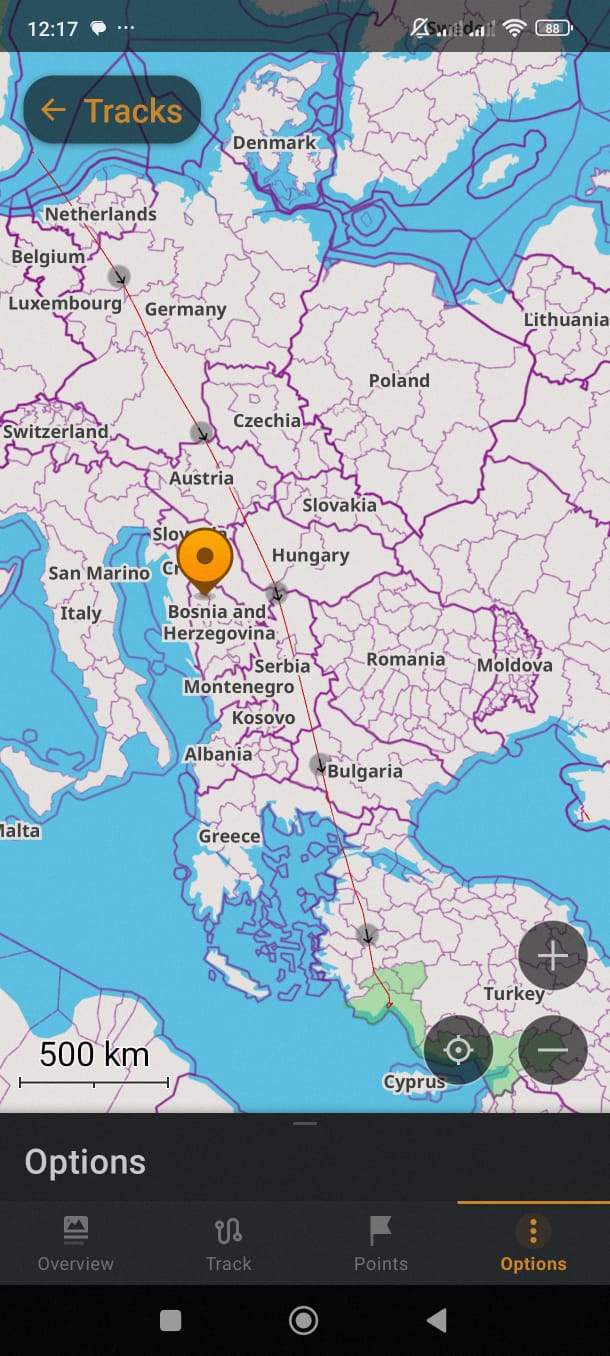
Experience the breathtaking flight from Newcastle to Antalya, where Europe’s stunning landscapes and rare phenomena unfold beneath the wings.
In the first part of my mesmerizing journey across Europe, I embarked on a captivating flight from Newcastle to Antalya. As we crossed Europe, the skies revealed a series of breathtaking sights—from the architectural marvel of the 1915 Çanakkale Bridge to the vivid colors of the Danube River. Join me as I relive this extraordinary adventure, soaring high above the continent.
Taking Off from Newcastle: The Beginning of a Mesmerizing Journey
As the plane ascended from the runway in Newcastle, the roar of the engines gave way to a soft hum, and the familiar landscape of the North East of England began to shrink beneath me. The Tyne River, with its iconic bridges, soon became a distant ribbon of silver, winding through the green expanse of the countryside. My mesmerizing journey across Europe had begun, and little did I know, this flight would be filled with wonders both natural and man-made, each more captivating than the last.
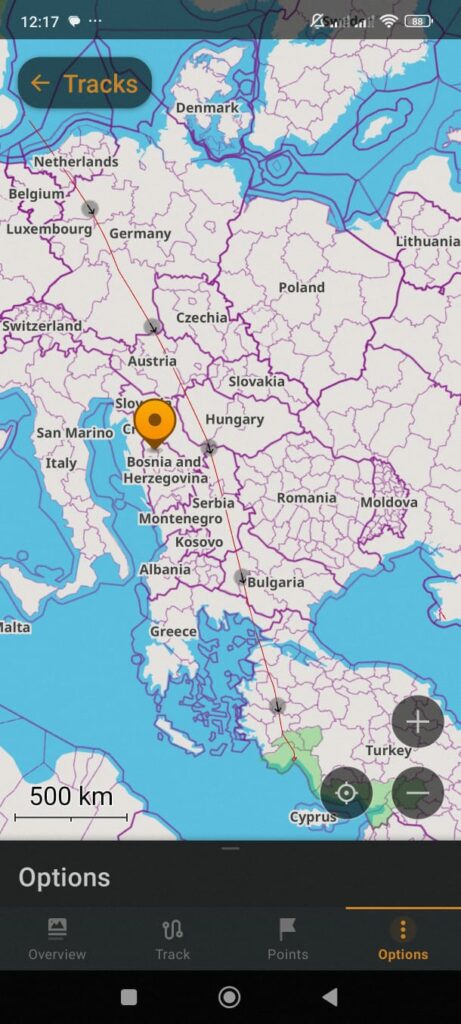
Crossing England: From Yorkshire’s Quilt to the North Sea
Heading southward, the patchwork fields of Yorkshire unfurled like a well-worn quilt, their earthy tones softened by the afternoon light. Below, the cities of Leeds and Sheffield appeared as clusters of tiny blocks, their industrial roots evident even from 37,000 feet. I was entranced by the shifting landscape, from the rolling hills to the dense urban sprawl, until the plane broke through the last of the English clouds, revealing the shimmering North Sea ahead.
Veering East: The Mesmerizing Dutch Landscape
Instead of the expected crossing into France, our path veered eastward. The vast expanse of water gave way to the low-lying land of the Netherlands, a country famously shaped by water. From above, the Dutch landscape was a marvel of human ingenuity: a mosaic of green fields intersected by an intricate network of canals and dotted with wind turbines, turning gracefully in the wind.
Witnessing the Glory: A Rare Aerial Phenomenon
It was here, over the Netherlands, that I first noticed something extraordinary—a perfect circle of colors, hovering above the clouds, centered around the shadow of our plane. This phenomenon, known as a glory, is a rare optical event that occurs when sunlight is backscattered by tiny water droplets in clouds. The light is refracted and reflected within these droplets, creating a series of concentric, rainbow-colored rings surrounding the shadow of the airplane, also known as the “Brocken spectre.”
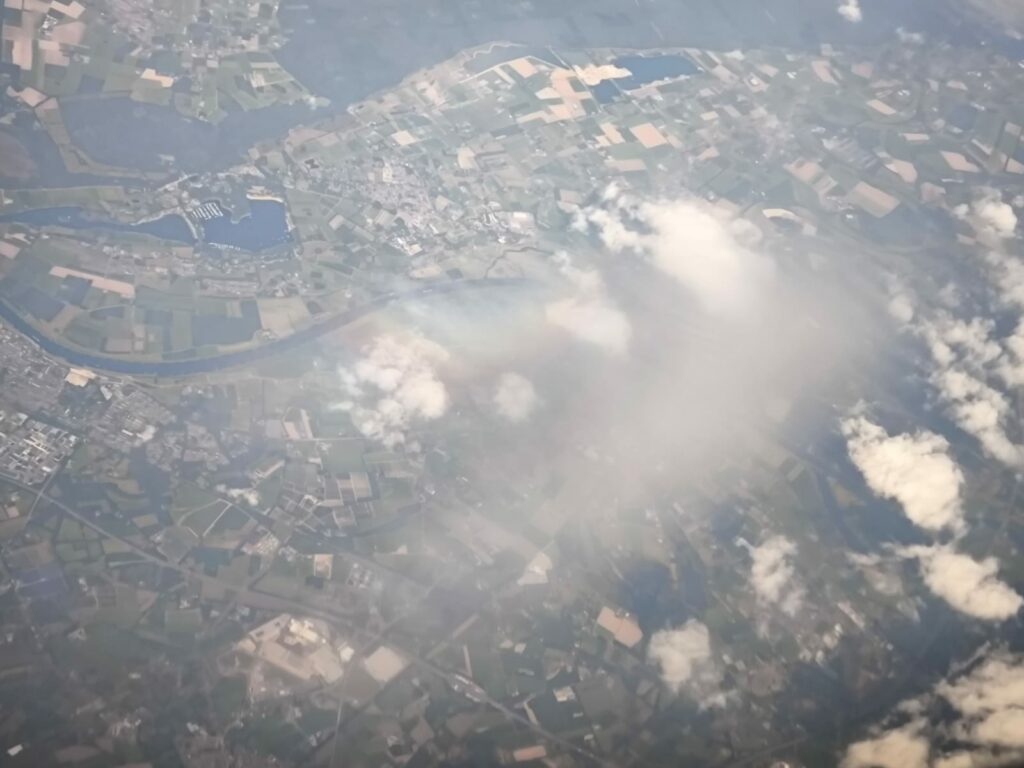
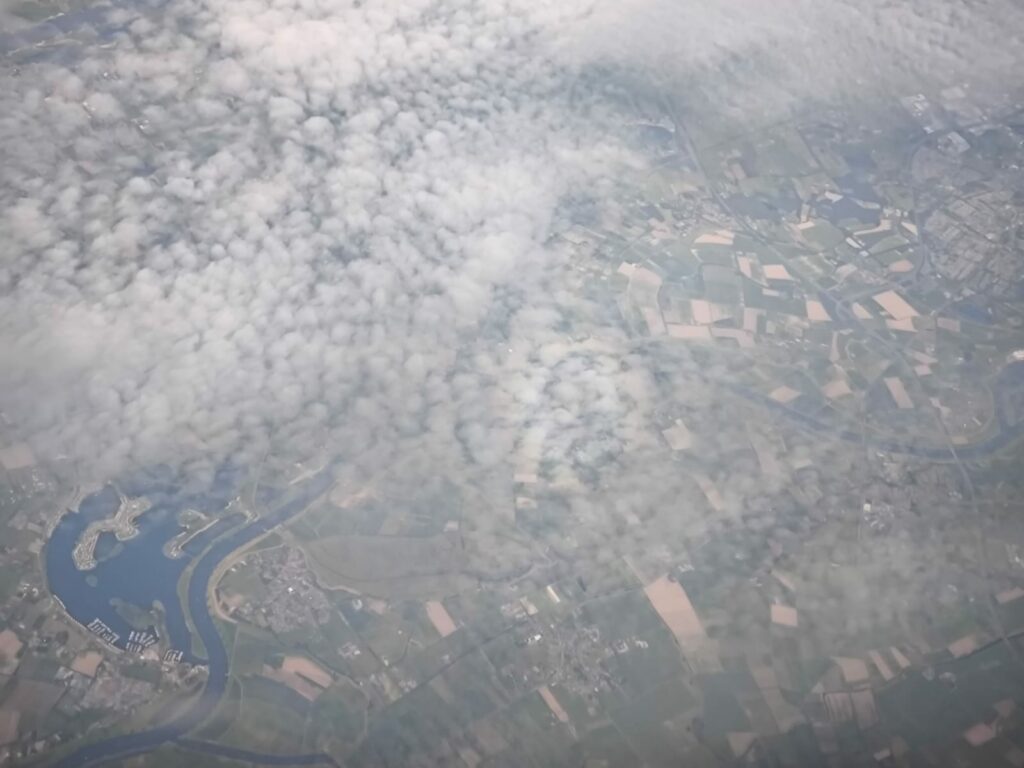
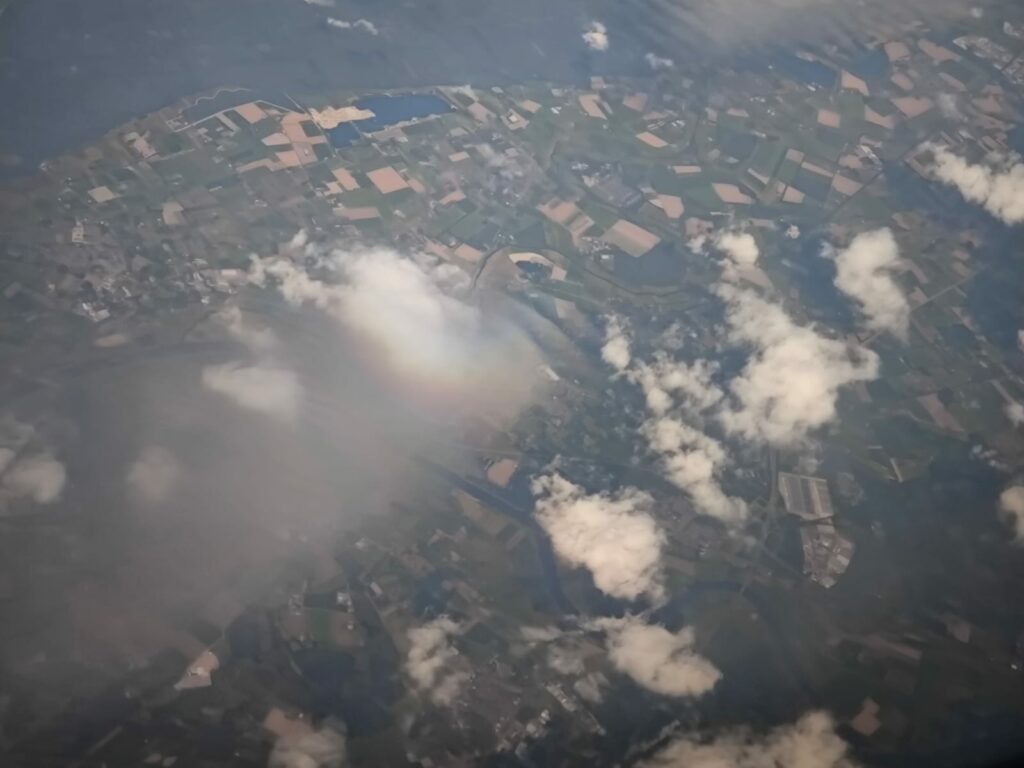
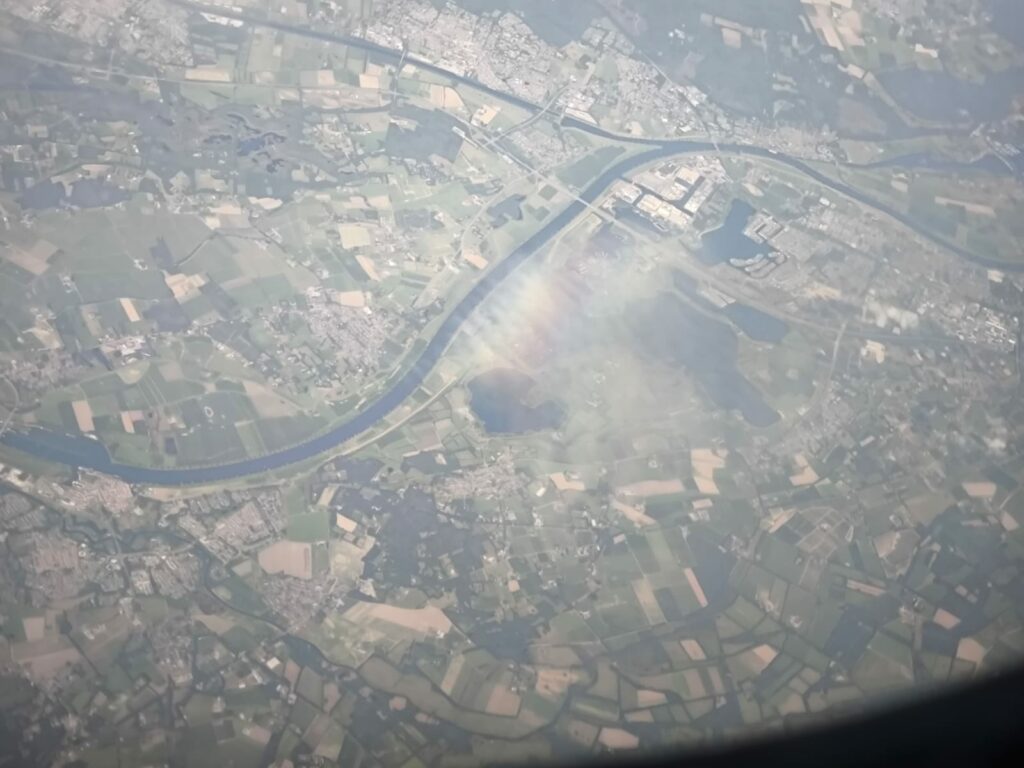
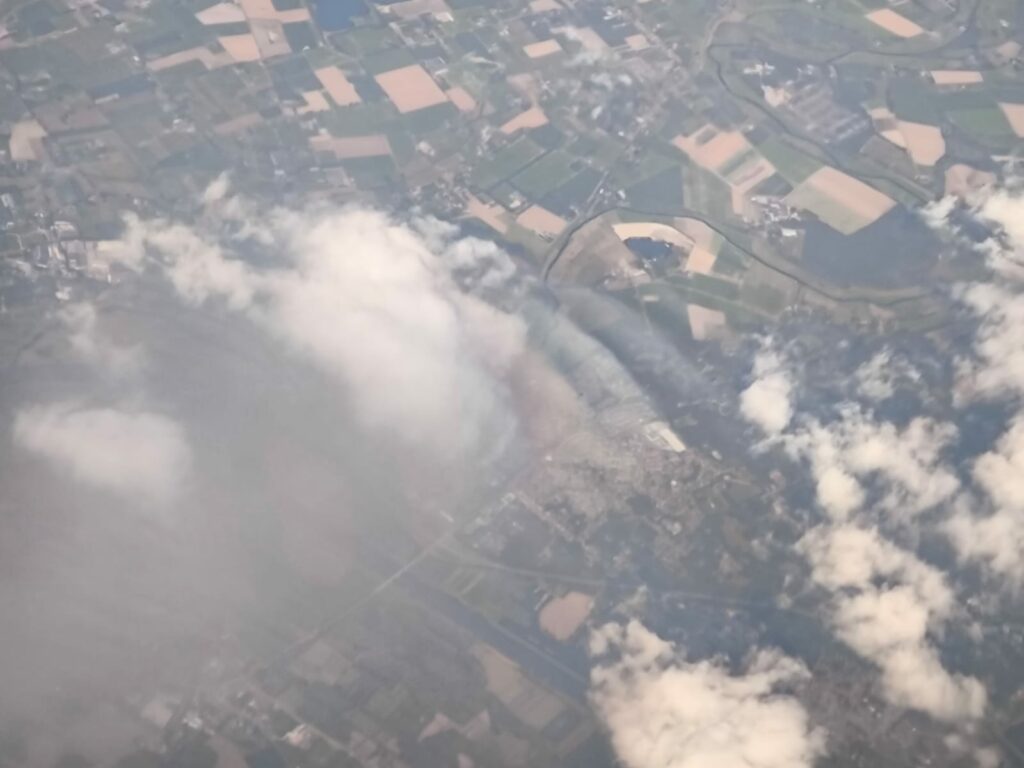

The glory appeared in various forms throughout the flight, sometimes as a full circle, other times as arcs, depending on the thickness and evenness of the cloud cover below. This mesmerizing effect, shifting from perfect circles to incomplete arcs, left me in awe. It was a reminder of the beauty and mystery of the natural world, creating a connection between me, the aircraft, and the skies we were traversing.
Crossing Belgium: Historic Cities and the Mighty Rhine
As we crossed into Belgium, the land below shifted once more. The historic cities of Brussels and Antwerp, rich with centuries of history, passed beneath us. I marveled at how, even from this height, I could sense the distinct character of each place. Soon, the industrial heartland of Germany came into view. The Rhine River, wide and winding, was a stark contrast to the orderly fields that surrounded it. I captured an image of its green waters, a natural lifeline that has shaped the history and culture of the region.
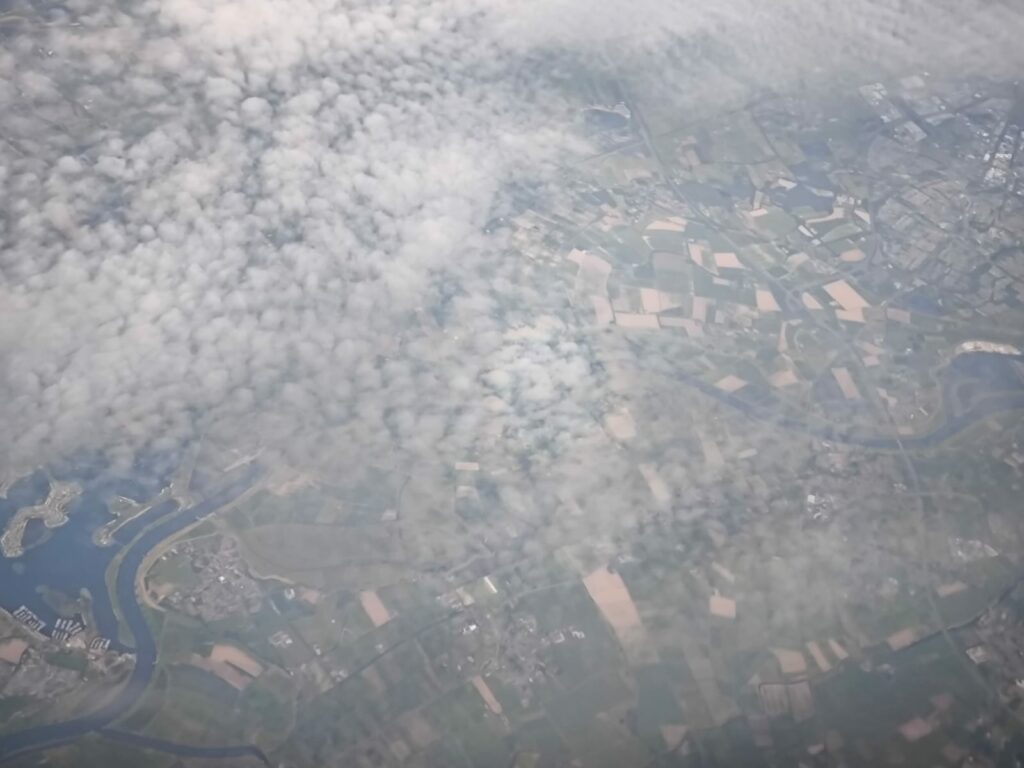
Flying Over Germany: The Rhine, Cologne, and Frankfurt
Entering Germany, the landscape shifted yet again. The Rhine River, winding its way through the country, was a sight to behold from the air. We crossed over Cologne, with its towering cathedral, and Frankfurt, a bustling city known for its blend of modern skyscrapers and historical sites. As we passed near Hanau, the varied landscape of forests and rivers below painted a picture of central Germany’s rich natural beauty.
Spotting the Kochertalbrücke: Germany’s Engineering Marvel
Continuing southeast, the plane followed a route over the rolling hills and picturesque valleys of Bavaria. It was here, near Schwäbisch Hall, that I captured a striking image of the Kochertalbrücke. This magnificent bridge, supported by multiple towering pillars, spans a deep valley, making it one of Germany’s highest viaducts. From above, the bridge looked like a fine line stretching across the landscape, a testament to modern engineering amidst the natural beauty of the Bavarian countryside.
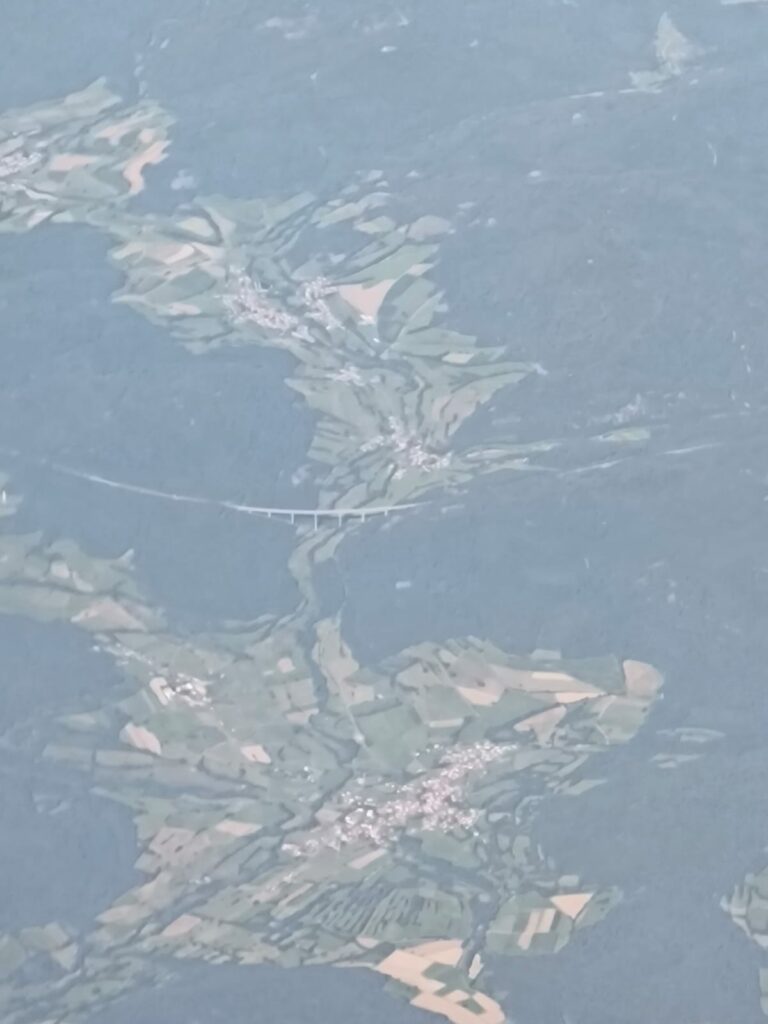
Encountering Other Aircraft: A Sky Full of Traffic
The skies above Europe were busy that day, and I found myself spotting other planes flying in the opposite direction, their contrails tracing lines across the sky. It was fascinating to see how this vast, seemingly empty sky was, in fact, a multi-lane highway for aircraft. Each plane was assigned specific altitudes and headings to ensure safe separation, like cars on a motorway.
At one point, a plane appeared to be coming directly toward us, only to continue on a parallel path, slightly above our altitude. This illusion, caused by the relative motion and perspective, is common in busy airspaces. Modern air traffic control systems and onboard collision avoidance systems ensure that even when planes seem close, they are flying safely apart, a comforting thought as we continued our journey.
Austria’s Alpine Majesty and the Colorful Danube
The plane continued southeast, and I found myself flying over Austria. Below, the Alps began to rise, their snow-capped peaks gleaming in the sunlight. As we crossed into the Upper Austria region, I was struck by a strange phenomenon—the Danube River, usually a deep blue, appeared green.
Aerial View of the Danube River: A Dance of Colors
Yet, as we approached the confluence with the Traun River, the water of the Traun remained a striking blue. This color contrast, where the Danube was green and the Traun was blue, was fascinating. The green hue of the Danube could be attributed to the sediment it carries, particularly from agricultural and industrial areas, as well as the presence of algae in its slower-moving sections. In contrast, rivers like the Traun, originating in the Alps, carry less sediment and are fed by snowmelt, making their waters clearer and bluer.
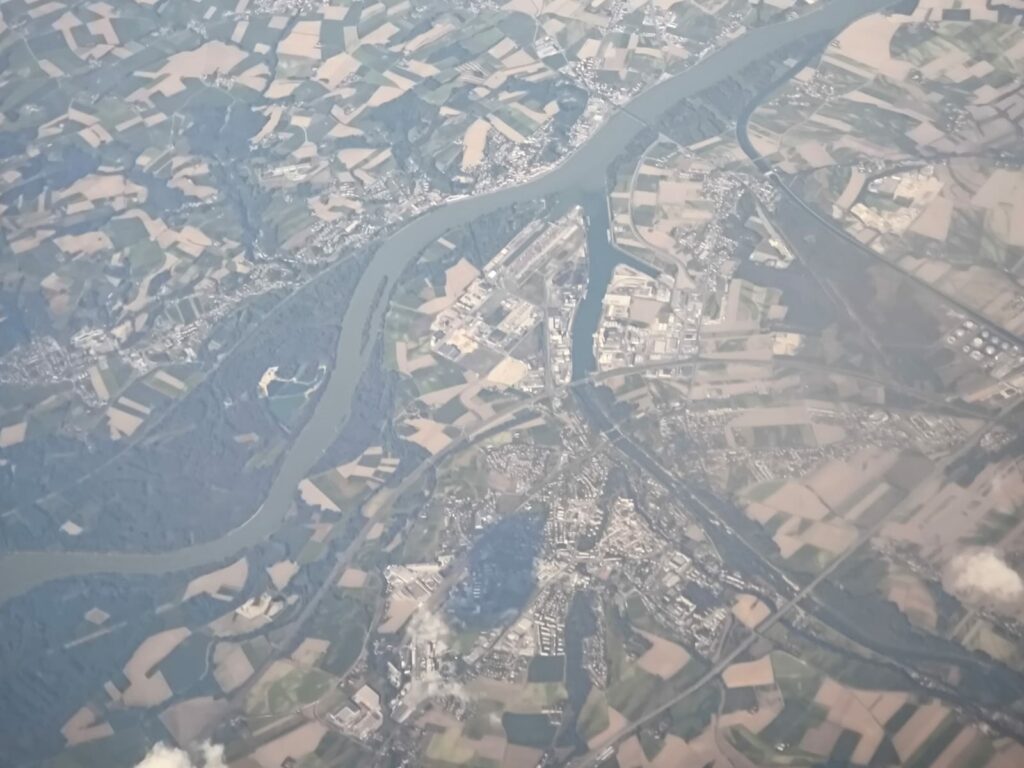
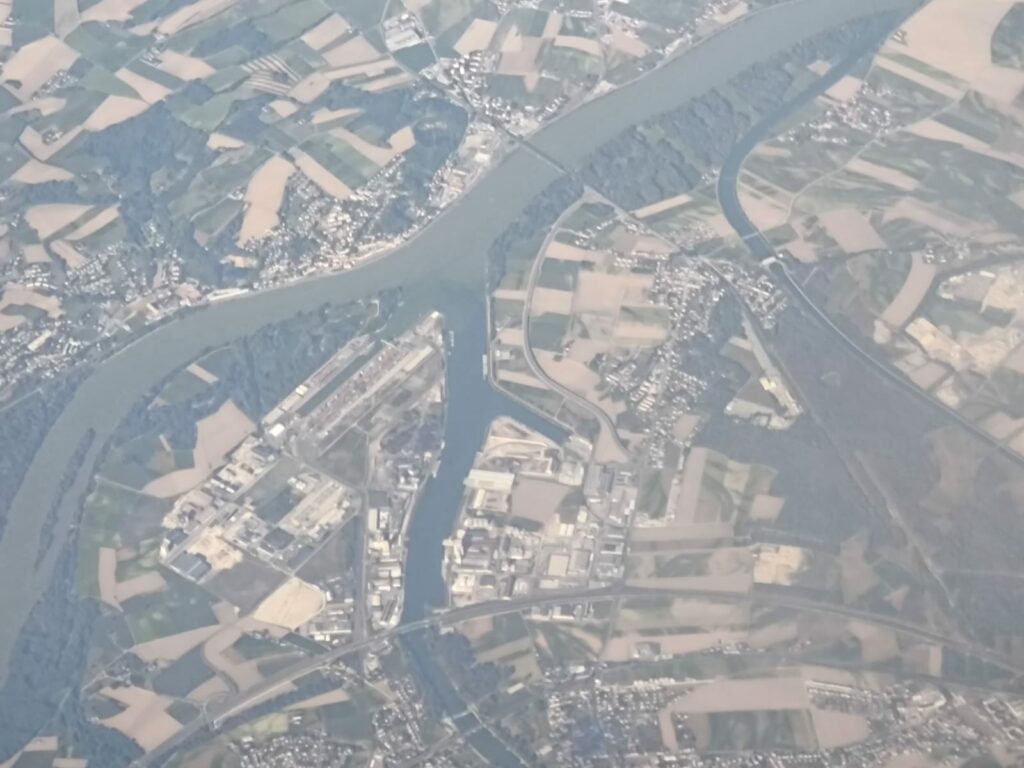

The mixing of these waters created a visible boundary, a line where the green of the Danube met the blue of the Traun, each refusing to fully blend with the other. From my vantage point in the sky, it was a stunning reminder of how nature’s elements interact in ways both subtle and grand.
Hungary’s Quiet Beauty: Lake Balaton and Beyond
Continuing over Hungary, I caught sight of Lake Balaton, a vast inland sea that stretched out beneath the plane. The rural landscape around the lake seemed quieter, with smaller roof sizes and varied plot arrangements. Perhaps it was the contrast with the more developed areas we had passed earlier, or maybe it was the gentle way the land folded into the lake, but Hungary felt different—less hurried, more connected to the earth.
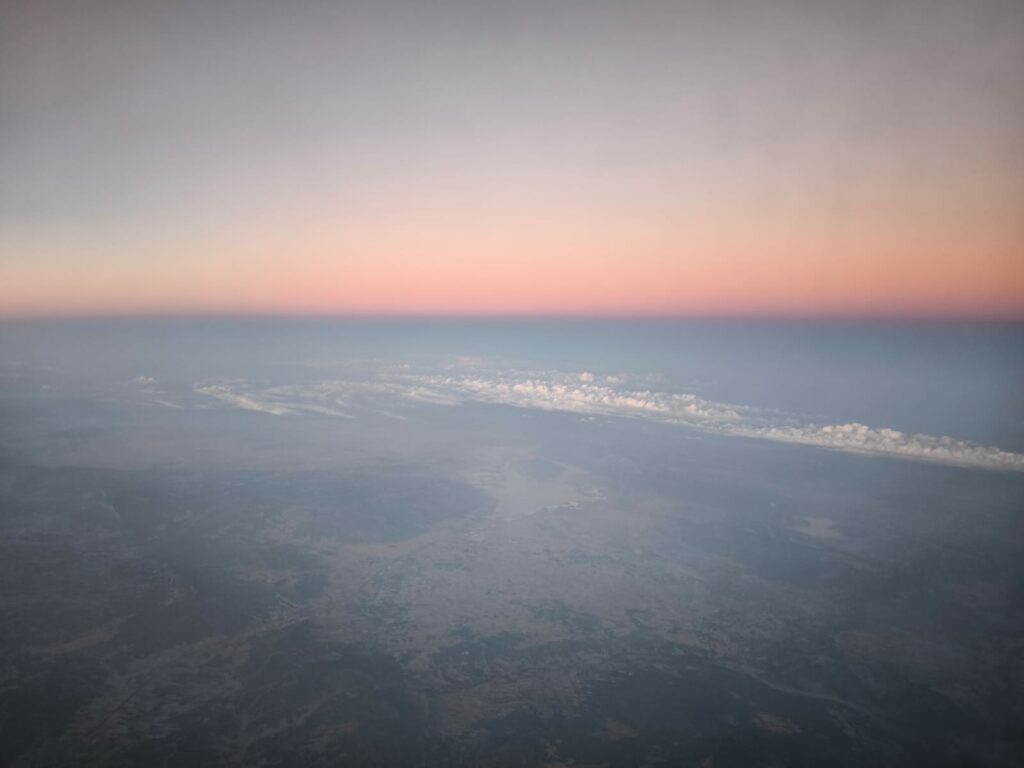
Crossing Lake Balaton: The Hungarian Sea
Lake Balaton, often referred to as the “Hungarian Sea,” is the largest lake in Central Europe and a major tourist destination. From above, its vast expanse stood out, contrasting with the urban landscapes I had passed over earlier.
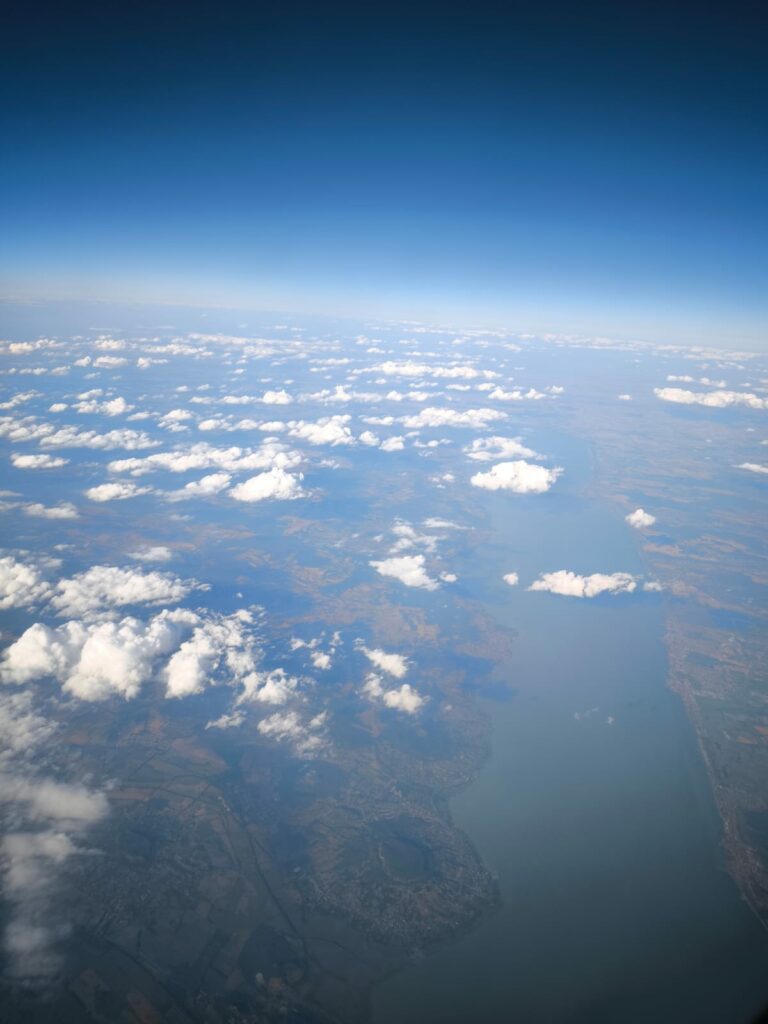
As I flew over the northern shore of Lake Balaton, another striking feature caught my eye—the Badacsonyi Landscape Protection Area. This large, flat-topped hill, which resembled a crater or an extinct volcano from the air, is part of Hungary’s ancient volcanic landscape. The Badacsony mountain, with its steep cliffs and basalt columns, is a remnant of volcanic activity from millions of years ago. The region is also renowned for its vineyards, producing some of Hungary’s finest wines. The sight of this volcanic hill, framed by the blue waters of Lake Balaton and the surrounding vineyards, added another layer of beauty to the Hungarian landscape.
As I crossed into Hungary from Austria, I noticed a distinct difference in the infrastructure. The buildings appeared smaller, and the plot sizes were more varied, reflecting Hungary’s more rural and traditional character, particularly outside major cities like Budapest.
This difference in landscape and architecture is a testament to the varied socio-economic development across Europe. While Hungary is modernizing rapidly, parts of the country still retain a charm that is deeply connected to the land and its agricultural roots.
Serbia’s Rugged Terrain: Crossing the Heart of the Balkans
As we crossed into Serbia, the landscape became more rugged, with valleys and mountains unfolding beneath us. The borders of Europe were not just political lines on a map; they were written in the very fabric of the land. Every country, every region, brought with it a new pattern, a new rhythm. The glory continued to follow us, a silent, colorful witness to our mesmerizing journey across Europe.
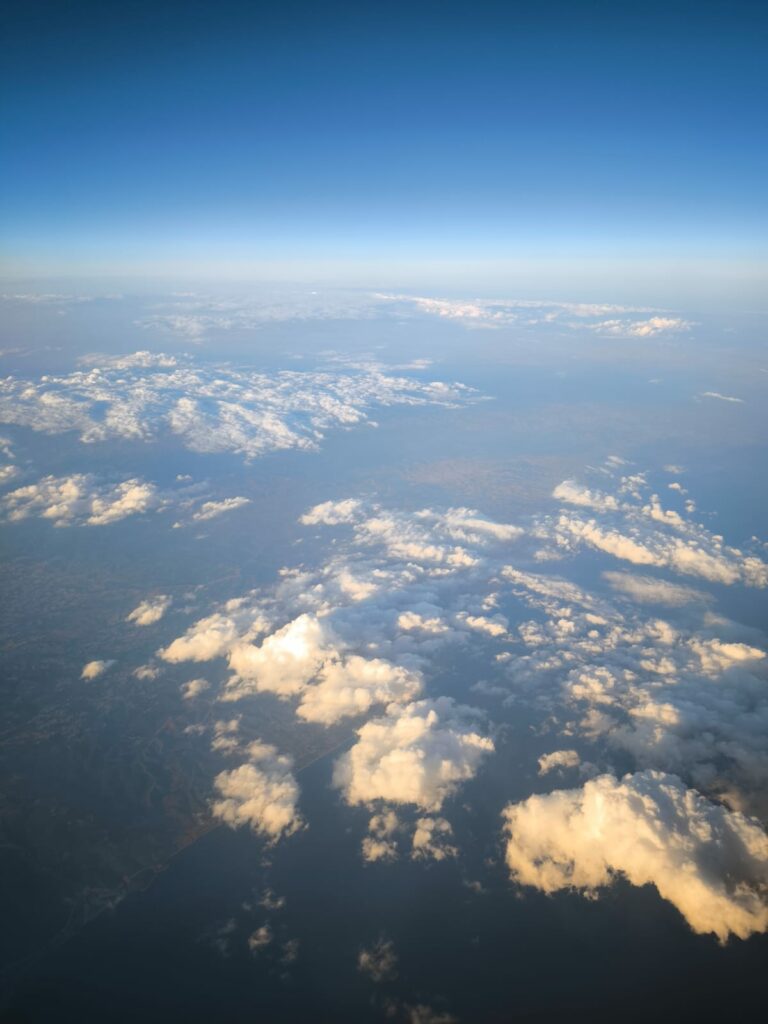
Turkey’s Grand Welcome: The 1915 Çanakkale Bridge
Approaching Turkey, the sun began its descent, casting long shadows across the land. It was here that I spotted the 1915 Çanakkale Bridge, spanning the Dardanelles Strait. Even from this height, the bridge was an imposing structure, its massive towers reaching skyward, symbolizing a connection not just between continents, but between the past and the present. It stood as a testament to human achievement, bridging not only the waters below but the centuries of history that had shaped this region.
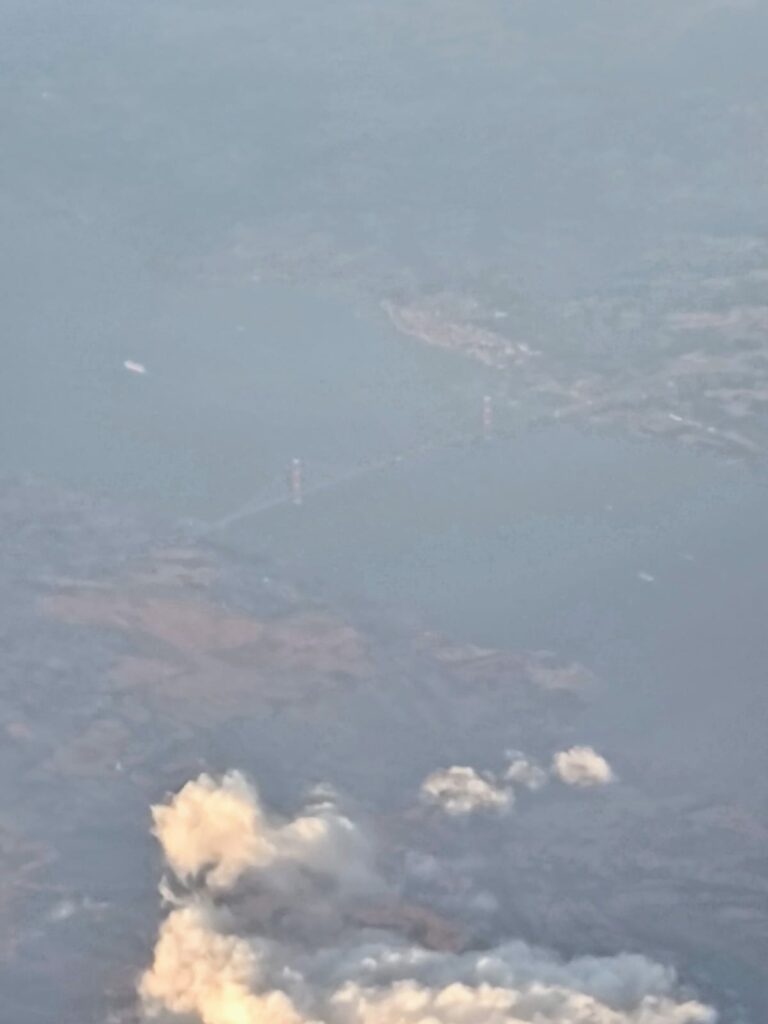
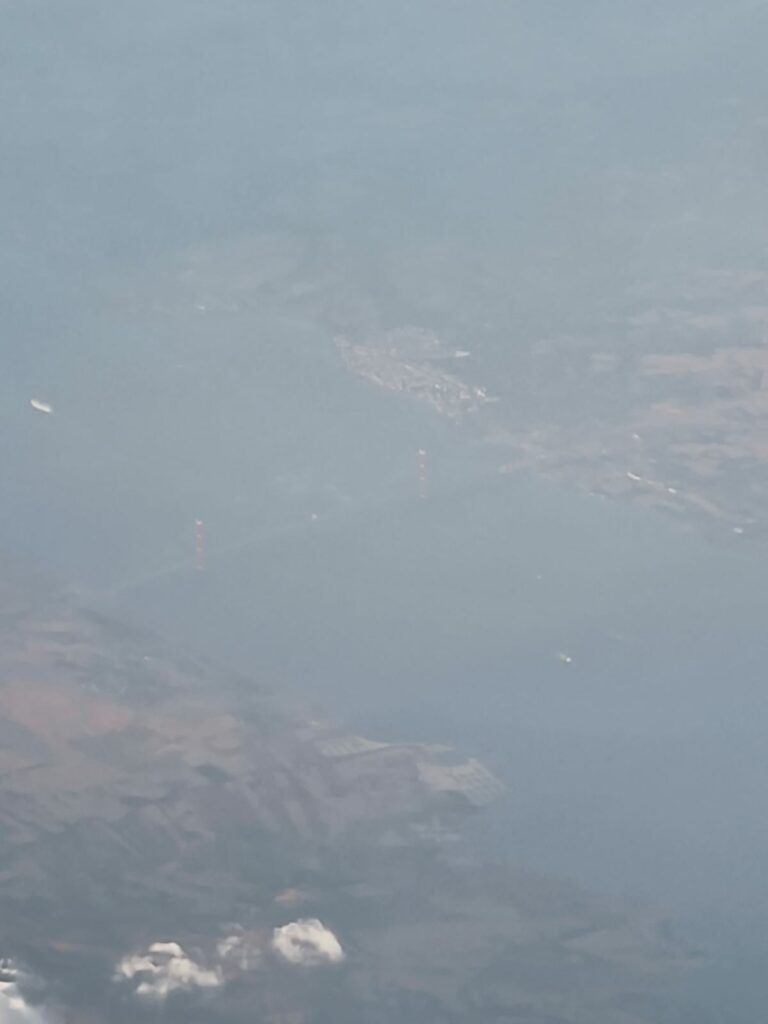
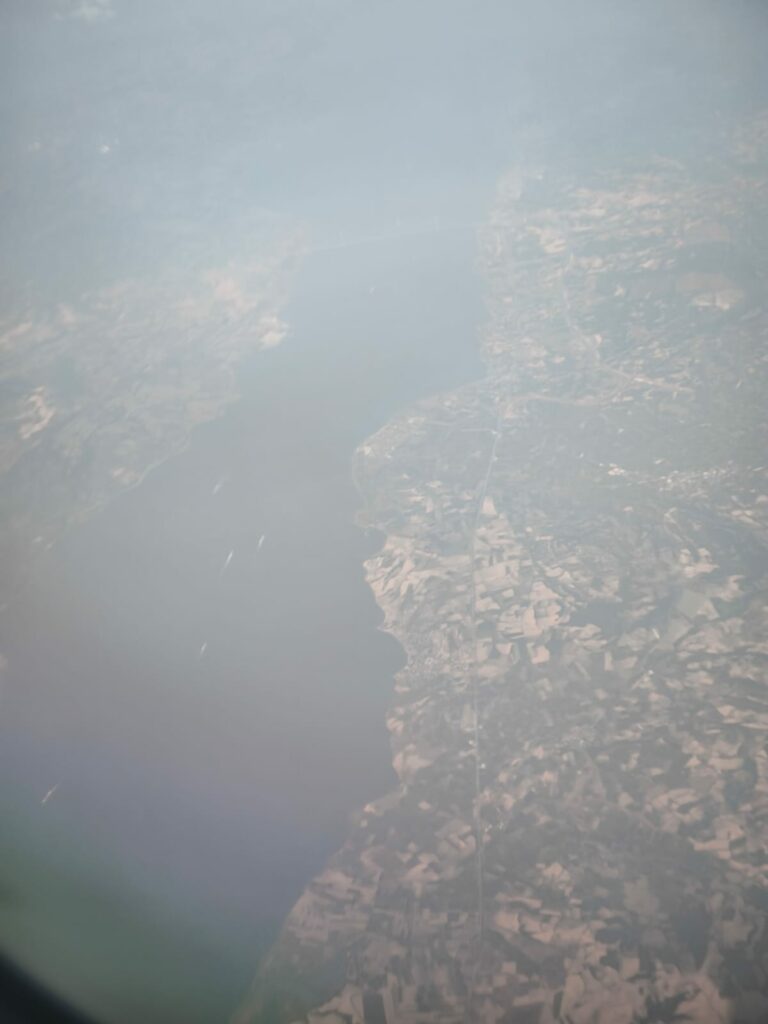
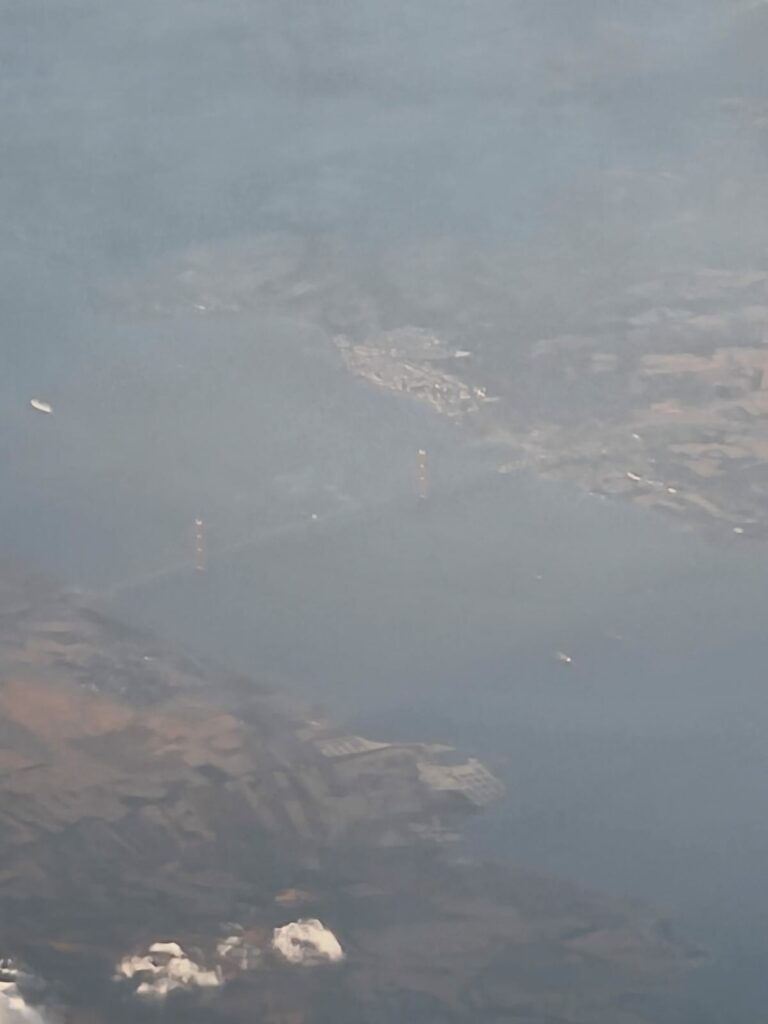
Antalya’s Arrival: A Starry Descent Over the Mediterranean
As we neared Antalya, the final leg of our mesmerizing journey across Europe began to unfold. The Taurus Mountains rose to greet us, their jagged peaks a dramatic backdrop to the lush coastal plains. And then, in a sudden burst of blue, Lake Salda appeared, its waters as clear and pristine as any I had ever seen. They called it “Turkey’s Maldives,” and from above, it was easy to see why. The lake was a sapphire set in a ring of white sands, a perfect counterpoint to the rugged terrain that surrounded it.
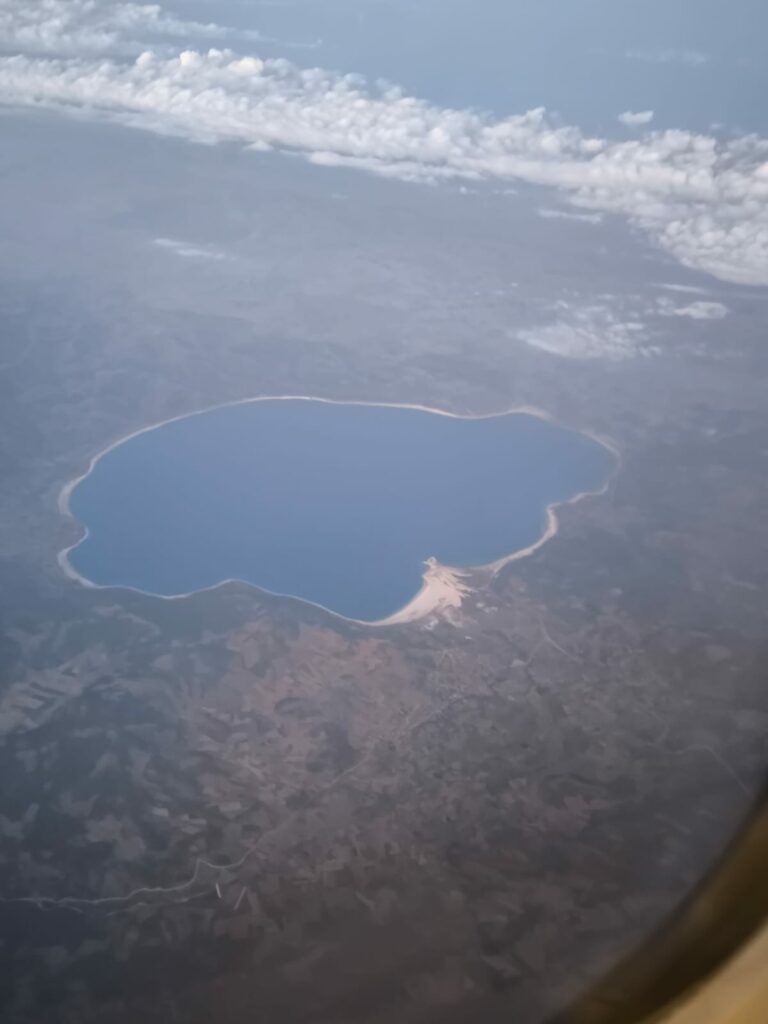
Touchdown in Antalya: The End of a Mesmerizing Journey
Descending into Antalya as night fell, the city below sparkled like a sea of stars, its lights stretching out along the coastline. The Mediterranean shimmered under the moonlight, a vast, dark expanse that seemed to blend into the night sky. As we touched down, the warmth of the evening—31 degrees—enveloped me, a welcome contrast to the cool air-conditioned cabin. The journey had ended, but the memories of the skies above Europe, with their glories, rivers, and bridges, would stay with me long after.
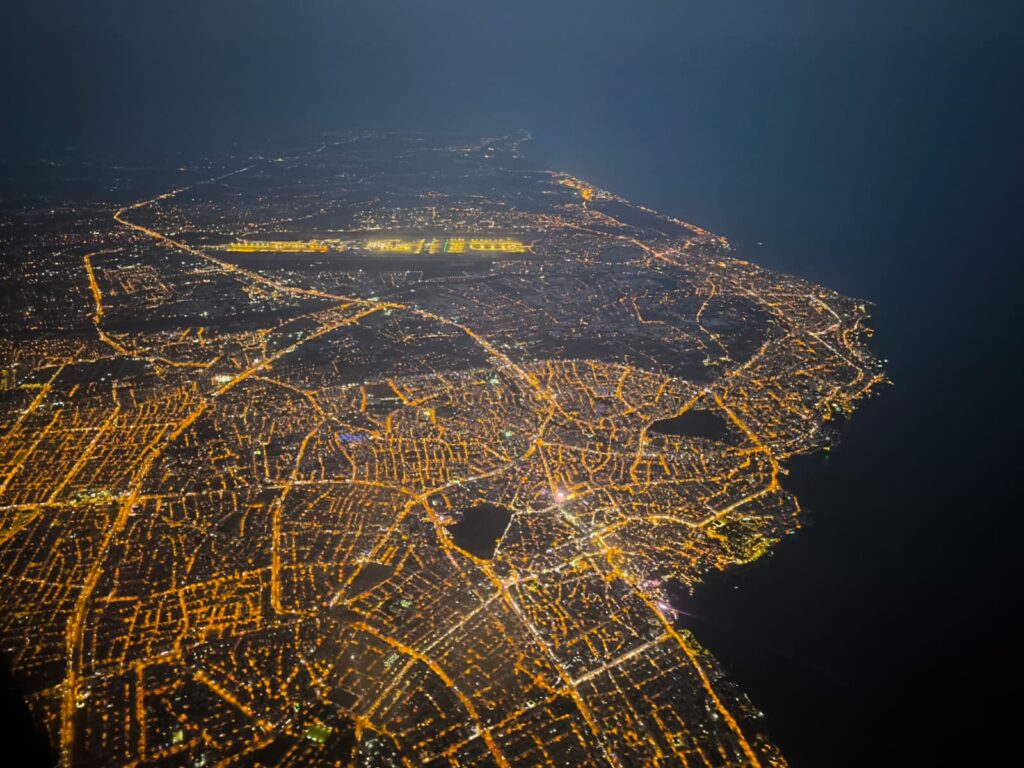
Travel Essentials: Tools, Tips, and Resources
Capturing the Journey with OsmAnd
For those curious about how I recorded this journey, I used the OsmAnd app. This open-source mapping tool allowed me to log every detail of my flight, from altitude to speed, and the precise route we took. It’s a handy tool for travelers who want to keep a detailed log of their journeys, whether by car, bike, or plane. Using OsmAnd, I was able to capture every twist and turn of my mesmerizing journey across Europe.